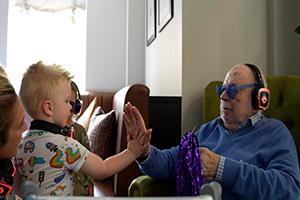Incontinence in care homes
It is important to remember that the risk of urinary incontinence increases with age but is not an inevitable part of ageing. It is estimated that more than 50% of residents in long-term care settings are affected by incontinence and in many cases, it is associated with embarrassment and reduced quality of life.
It can be challenging alleviating embarrassment and preserving dignity of the individual but it is important to remember that incontinence can be managed, treated and in some cases cured. Providing the right solutions can provide a better quality of life, increase independence, and promote dignity.
Urinary Incontinence can by classed in the following categories: stress incontinence, urge incontinence, overflow incontinence, functional incontinence, and mixed urinary incontinence. A holistic continence assessment can help to understand the type, level, and severity of incontinence. Other factors that are considered are functional aspects, limited mobility preventing timely access to a toilet, effects of medications e.g. diuretics increasing urinary output and medical conditions that may cause excessive urination or difficulty with urination e.g. diabetes, neurological disease etc or. Once the resident’s is assessed, the choice of treatment and management can be identified and a treatment plan

So, what simple measures can be taken to maintain continence
- Understand the person’s toileting patterns and prompt them to visit the toilet regularly, ensure that they know the location of the toilet and provide privacy
- Use aids and appliance to make toileting more accessible such as a raised toilet or a wall-mounted grab bar if the person is unsteady on their feet. Commodes/ urinals for men if toilet not accessible, to use in the privacy of their own rooms
- Ensure clothing is easy to remove, clothing with Velcro fasteners or elasticised waistbands may be easier to manage
- Limit drinks like caffeinated coffee, tea, and sodas, which may increase urination, but encourage water and diluting juice.
There are many different treatments available to manage incontinence including medications, bladder training programmes, and pelvic floor exercises.
In some cases, the individual may not respond to treatment and containment products may be required to maintain dignity. If containment products are required ensure that they meet the individual needs.
Here are some tips on how to choose a containment product :
- Type of incontinence - is it urinary, faecal, double, this will help with the choice of design/shape of product
- Level of incontinence - is it light, moderate, heavy this will aid the choice of the correct absorbency to aid containment
- Correct size - measure the hips and waist and take the larger of the two measurements as the size guide, this will ensure the correct fit for fixation pants, all-in-one products, or pull-on measure
- Lifestyle & mobility, (immobile, limited mobility, limited activity, active) this will help with choice of design of the product.
Attends provide the right solution for individuals to help support best practice in continence care. If you would be interested in learning more, Attends offer an online continence training program learning.attends.co.uk. or contact our customers services team 01924 669 260.





